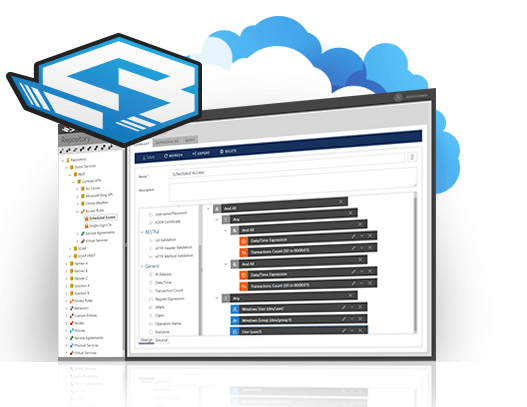
Systems architects, dev-ops professionals, and system analysts need no persuasion when it comes to the validity or usefulness of APIs.
These inherently empowering conduits that control the flow of information between systems, services, and (these days) even between discrete, single containers, are the way that specialist point products communicate and connect.
APIs are so ubiquitous that there are very few proprietary applications that are hermetically sealed from any form of interaction — perhaps the only such instances are to be found in areas where isolation is either unavoidable or intentional, like in specialist, high-security settings.
But like any technology that really takes hold, the capabilities of APIs are limited at scale, not because of anything to do with any interface, but because of their abundance, both in number and in type. For most enterprises, therefore, seeking a useful API management & governance platform is rapidly becoming a necessity.
API management technology can be envisaged as a layer of abstraction that provides a way that all API traffic (and API development) can be overseen and controlled by all stakeholders.
Those stakeholders consist of very different types: the member of an internal development team, the systems architect, operations managers, third-party suppliers and partners, and even customers, in a limited way.
The platforms featured below help organizations maintain the many (often many thousands) of APIs that exist both internally and externally-facing.
While not all the solutions we explore offer all of the following capabilities, readers outside the systems analyst’s office need to be aware of the following potential business gains that a well-structured API management framework can bring.
Re-use = efficiency. A coherent repository of API information (version, structure, schema, dependencies, etc.) means that APIs can be quickly duplicated and re-used. Especially important in organizations with multiple development or operational teams, duplication of existing resources prevents wasted time and resources and also helps ensure that security policies are better enforced.
Management = oversight. At scale, tracking each individual conduit into the organization from outside, or keeping tabs on how internal apps and services are being utilized, and by what, is a massively complex view to capture. An API management platform centralizes all such information flows and therefore gives necessary oversight.

Oversight = quality. By abstracting many hundreds or thousands of APIs by a management platform, issues in data flow like stumbling data transformation can be automatically flagged. Bottlenecks are quickly identified, and both change management and rollbacks are easier and can be tested out of production environments.
Unification = security. Whether it’s just a handful or many dozen, security methods can be applied according to use-case. Secure keys, Azure Active Directory, OAuth — all can be managed and overseen so that security can come first in every scenario.
Cloud = possibilities. With many enterprises using the cloud’s capabilities to cover bursts in demand on resources at peak times, an API management platform can abstract the differences in topology from internal data center to cloud provider. That removes technical concerns from any decision-making processes, so creating strategic oversight.
Knowledge = reporting. From better resource allocation to unearthing previously unseen patterns in demand, supply, and data requirements, an API management platform creates canonical records of how the business’s infrastructure is being used and how it performs.
Openness = profitability. The use cases for external access to internal systems are numerous. By creating coherent, safe and accessible access to self-service API provisioning, the organization’s partners and customers are presented with carefully controlled yet highly impactful data. When done well, API management can herald in a range of new possibilities for partners and customers, and a significant reduction in internal costs as a result.
Conclusion
Any developer will be happy to tell you of the intricacies and complexities that underpin a single API. Extrapolate the issues out many thousand times, and it becomes apparent that if done well, manual management of all the API instances in a large organization is a huge undertaking, one that’s extraordinarily expensive and resource-consuming.
However, with one of the following companies’ guidance and its technology capabilities, the management, governance, and insight into all API instances can be simplified and made a great deal more efficient, and, from the business’s perspective, a more fertile ground.
The challenge for any focused IT platform is always, in part, making its viability known as a value-bringer for the enterprise. But there are no such challenges for Nevatech’s Sentinet, a business-first API Management platform that’s right at the cutting edge.
Abstracting APIs (both internal and external-facing), the Sentinet platform helps design, develop, test, and run APIs throughout their complete lifecycle. And it support On-Premises, Cloud or Hybrid deployment models.

By massively reducing the management burden on IT departments, and ensuring that security runs like a seam through the platform, the Sentinet system cuts costs, surfaces insights into service use (and misuse), and even does the small stuff brilliantly — versioning, documentation, change management, dependency tracking, testing, and a whole host more.
With automated API Keys provisioning (you name the schema) to further lighten the load, and testing-to-production workflow made simple, enterprises need look no further for an API oversight platform. This does the job and keeps the C-Suite happy too! Read more on the pages of TechHQ here.
The multifaceted Mulesoft Platform gives an organization access to multiple resources to better manage its API distribution, governance, and efficiency.
From the initial design of API to publication on a centralized repository called Anypoint Exchange, resources covering all code instances from single microservice upwards can be shared, collaborated on, and published.
Compliance with the various geographically different data protection standards is supplied out-of-the-box (ISO 27001, PCI DSS, GDPR, and so on), and policies that govern access can utilize multiple management techniques, so access to resources is centrally managed.

As a central focus, the Mulesoft Anypoint Management Center provides more than a passive monitor for API management. In real-time, teams can be flagged if batches get stuck in process, slow down, or lose connection with a crashed server — and reactions to any events can be automated or undertaken manually according to policy.
Like many of the enterprise-grade systems featured here, managing and hosting APIs in the cloud is well-covered. The Mule runtime engine is a PaaS component of the Anypoint platform, a fully-managed and massively scalable solution for organizations that wish to outsource much of the technical complexity of API management.
AMPLIFY API Management platform helps teams create APIs from the cloud and on-prem services, publish them to a virtual marketplace, and control their access and use. The solution has an easy-to-use yet highly secure self-service capability, so partners (like third-party logistics, for example) can check out their own authentication tokens and download necessary documentation at will, but all within strictly-defined access policies.
Analytics of all traffic flows provide the measuring tools to ensure that the resources required can be made available quickly. All APIs are, as you might expect, abstracted away from their actual position on the WAN, and the central API gateway acts as a single point of oversight and control.
That conglomerate approach means the API gateway acts as a protector, enforcing security. The ongoing monitoring also ensures scalability issues are immediately acted upon, and the range of API interfaces are highly available.
The API management capability is just a single part of the AMPLIFY offering, which businesses can pick and choose from: its modular approach to enterprise solutions means that it’s suitable for any vertical or use-case — simply pick and choose what you need.
*Some of the companies featured on this article are commercial partners of TechHQ








